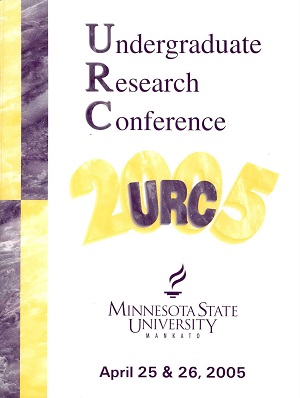Interruptions in Conversational Speech: A Comparison of Children with Williams Syndrome and Their Typically Developing Peers
Location
CSU 253
Start Date
25-4-2005 1:15 PM
End Date
25-4-2005 3:15 PM
Student's Major
Speech, Hearing, and Rehabilitation Services
Student's College
Allied Health and Nursing
Mentor's Name
Patricia Hargrove
Mentor's Department
Speech, Hearing, and Rehabilitation Services
Mentor's College
Allied Health and Nursing
Description
Researchers have shown an interest in children with Williams syndrome because of their unique communication characteristics. Briefly, some aspects of their language skills have been described as superior to their intellectual or cognitive skills, a pattern not expected in most theoretical models. One area of reported strength is their social use of language. In this study, we explored the rate of interruptions in conversational speech by children with Williams syndrome and their gender and age matched peers. Spontaneous speech samples of six adolescents with Williams syndrome and six typically developing peers were analyzed. The rate of interruptions was calculated for each participant. For the participants with Williams syndrome, the mean percentage of their utterances that were interruptions was 0.86. For the typically developing peers, the mean was 2.97. The difference between the two groups was not statistically significant. The results suggest that adolescents with Williams syndrome resemble their age peers in this aspect of conversational speech. This has ramifications for clinical issues as well as the understanding of the relationship between language and cognition.
Interruptions in Conversational Speech: A Comparison of Children with Williams Syndrome and Their Typically Developing Peers
CSU 253
Researchers have shown an interest in children with Williams syndrome because of their unique communication characteristics. Briefly, some aspects of their language skills have been described as superior to their intellectual or cognitive skills, a pattern not expected in most theoretical models. One area of reported strength is their social use of language. In this study, we explored the rate of interruptions in conversational speech by children with Williams syndrome and their gender and age matched peers. Spontaneous speech samples of six adolescents with Williams syndrome and six typically developing peers were analyzed. The rate of interruptions was calculated for each participant. For the participants with Williams syndrome, the mean percentage of their utterances that were interruptions was 0.86. For the typically developing peers, the mean was 2.97. The difference between the two groups was not statistically significant. The results suggest that adolescents with Williams syndrome resemble their age peers in this aspect of conversational speech. This has ramifications for clinical issues as well as the understanding of the relationship between language and cognition.
Recommended Citation
Nelson, Julie; Katie Kendhammer; Cristen Schnabel; Martha Winch; and Bethany Holbeck. "Interruptions in Conversational Speech: A Comparison of Children with Williams Syndrome and Their Typically Developing Peers." Undergraduate Research Symposium, Mankato, MN, April 25, 2005.
https://cornerstone.lib.mnsu.edu/urs/2005/poster-session-A/3



